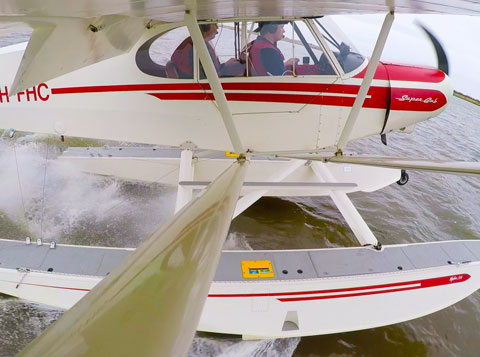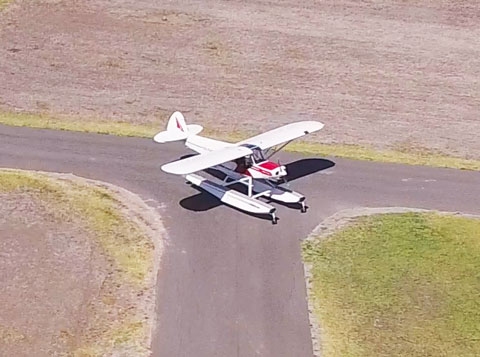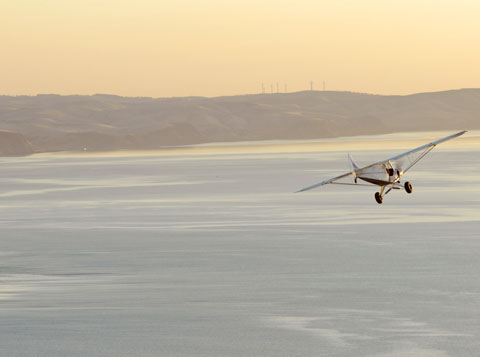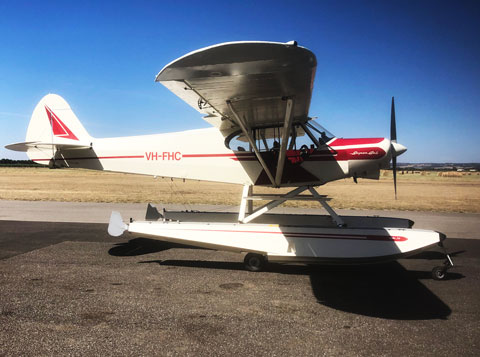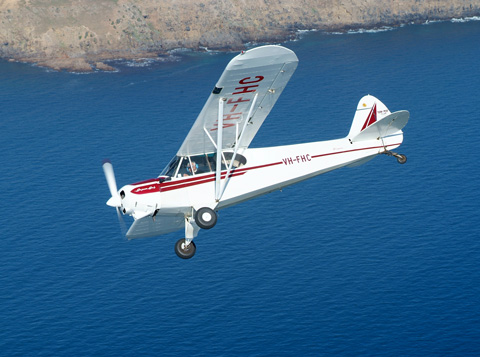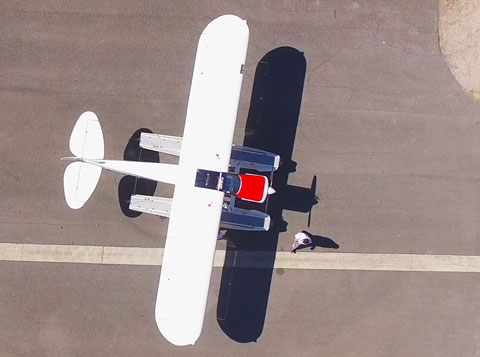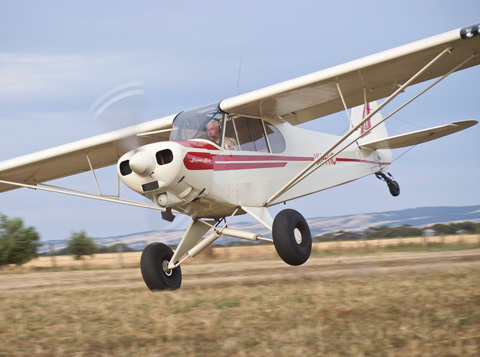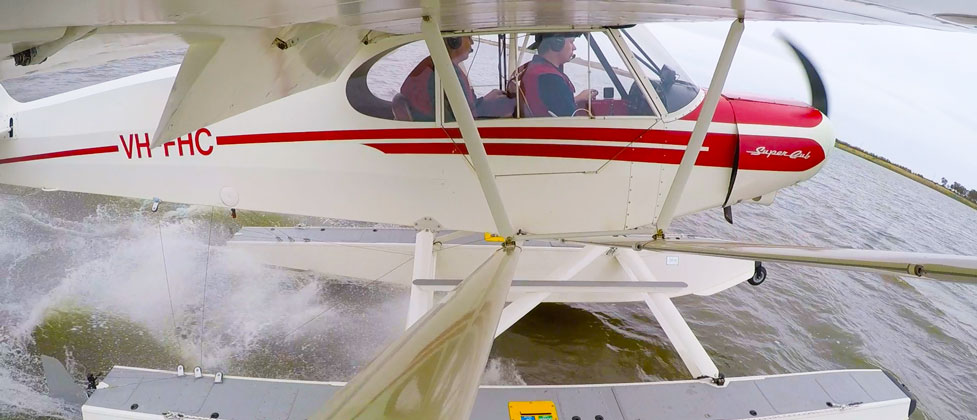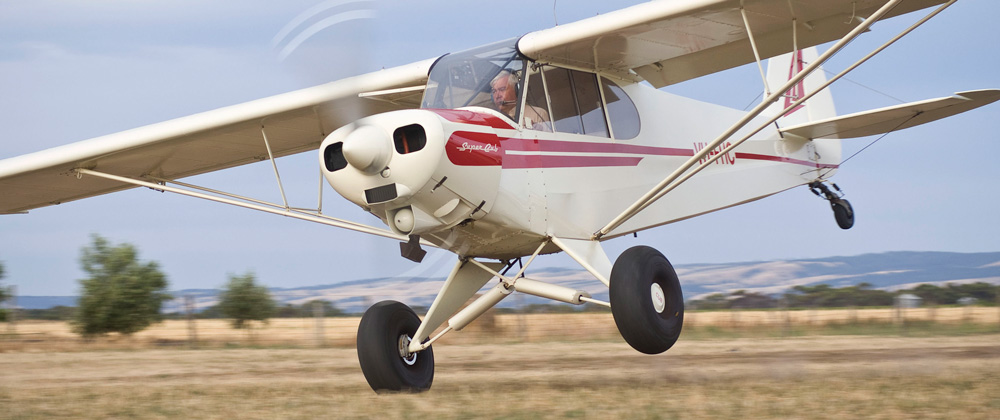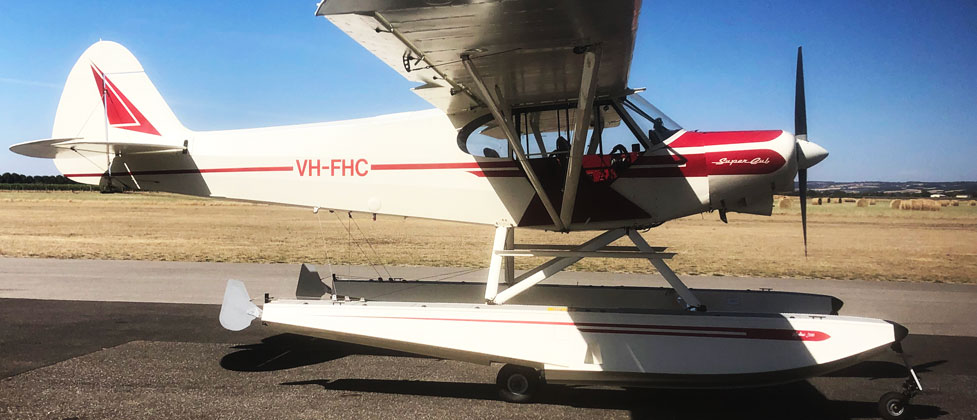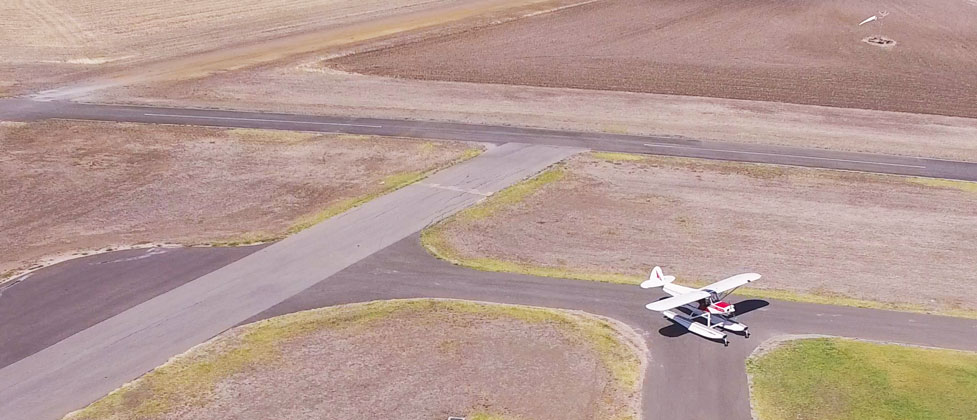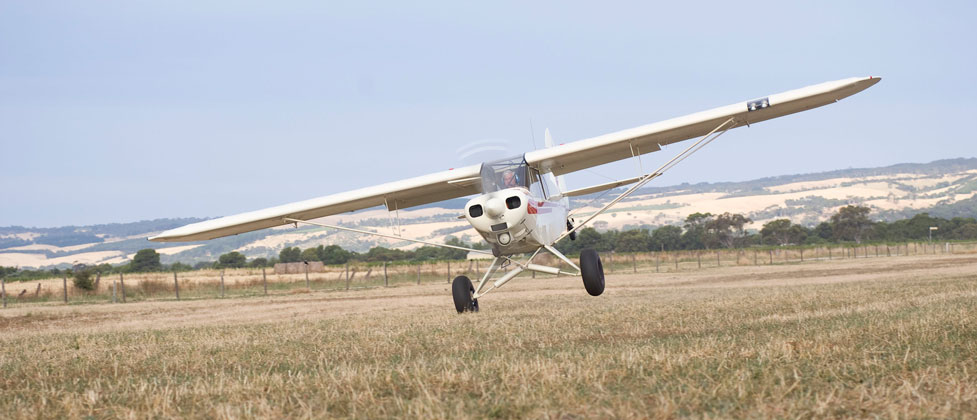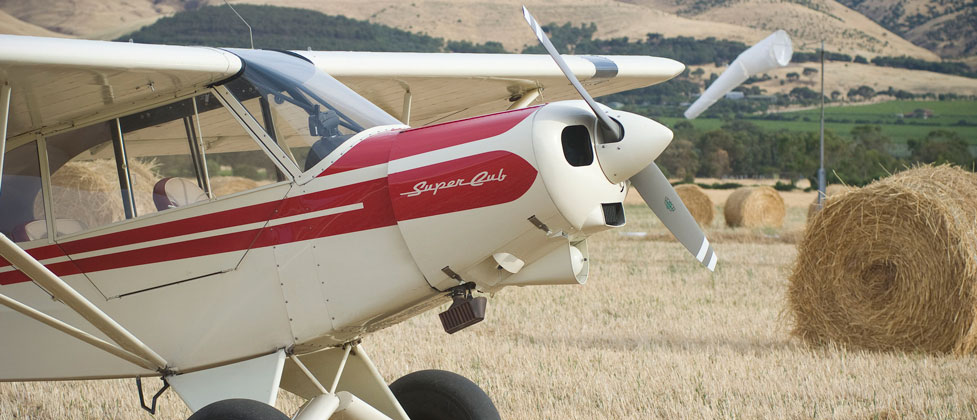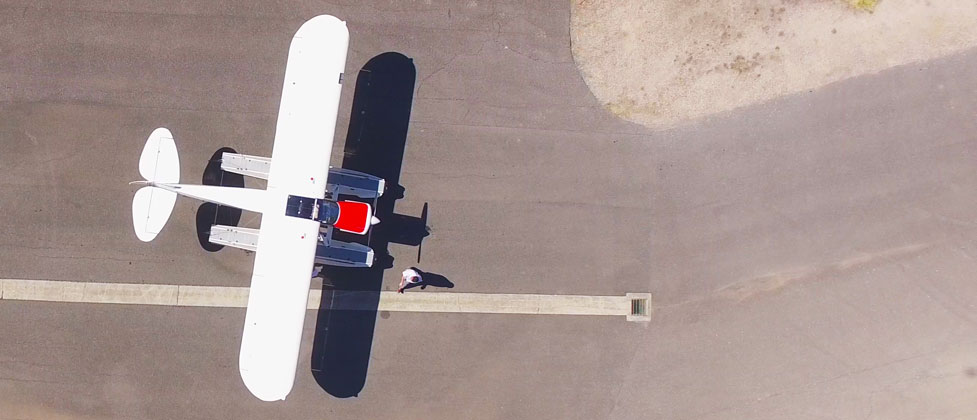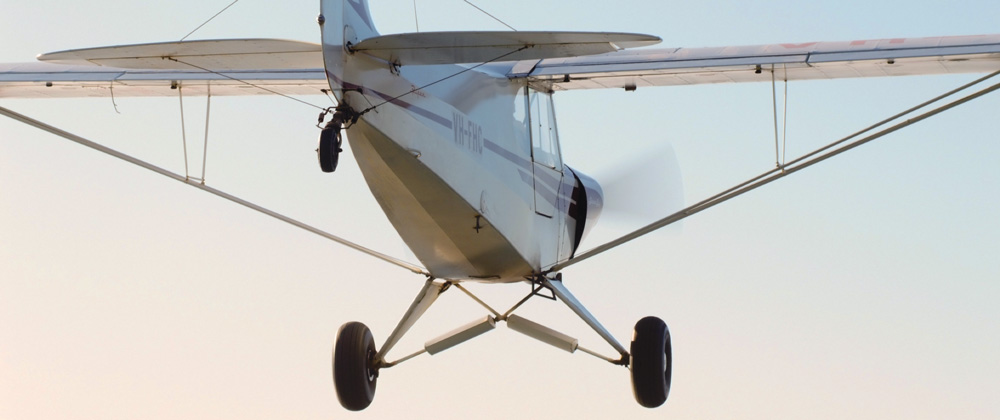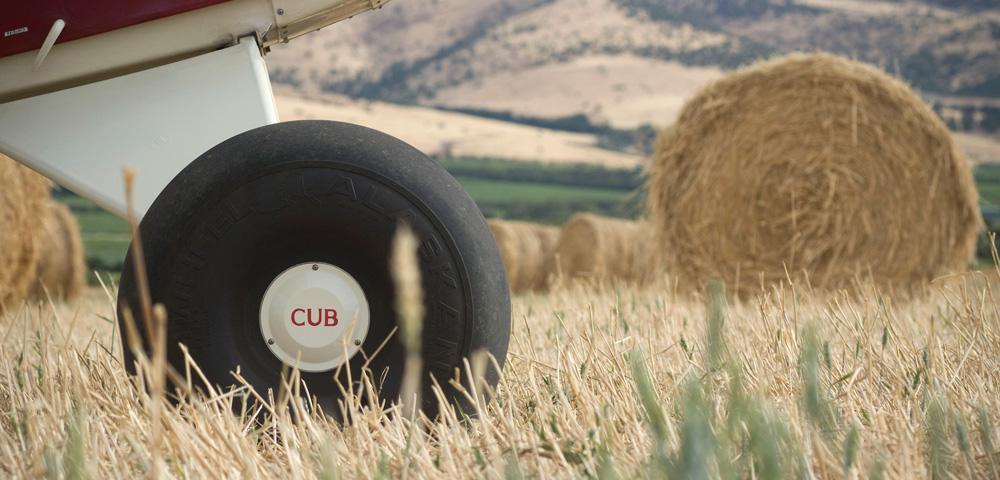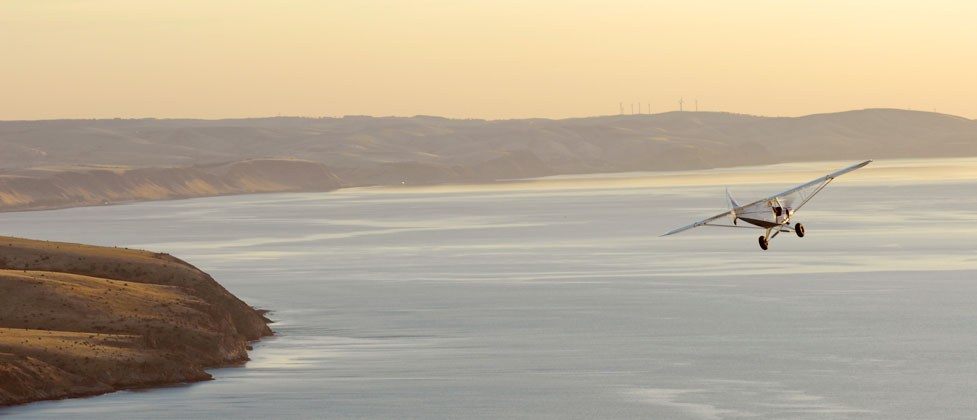Piper Super Cub Floatplane
PIPER SUPER CUB PA-18 160
Our Super Cub is a 1974 model aeroplane which has had only one previous owner in her 40 plus years of life. She lived at Latrobe Valley Airport in Victoria and was still being flown by her 86 year old lady owner until we bought her in June 2004. The Cub has been through an overhaul and repaint in 2009, now sporting a vintage cream and red paint scheme.
The Cub is another classic aeroplane, didn’t every young boy make an Airfix model of a Cub?? She flies beautifully, is amazing in her slow speed handling, short strips are easy for her.
The handling qualities make this aeroplane a wonderful ab initio trainer as well as a fantastic tailwheel training platform. She is earning her living for us now excelling in these roles.
Aircraft Registration: VH-FHC
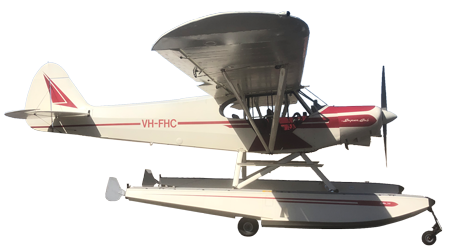
Martyn Writes….
Back in the UK circa Y2000, life was good. Career after 20 years of airline flying was at a high point, we had finally achieved our little patch of paradise in Sussex with the modest airstrip at the back door. Then thoughts of returning to Australia started to worm their way in! Dreams of wide open spaces, better weather, aeroplanes and of course FLOATPLANES.
The dream started way back then, however it has taken many more years before we have finally managed to enter the magical world that combines the joy of flight with the excitement of flying on and off the water.
Dear old FHC our Piper PA18 Super Cub is now wearing her splendid new pair of Wipline 2100 A floats and is getting them wet on a regular basis. The 2100 refers to the bouyancy in lbs and of course the A is for Amphibious, this means hugely increased utility and eases the processes of fuelling and maintaining. This comes at significant cost in $$ and also a weight penalty of course.
To fit the floats meant a good hard think about a few things that would need to be considered:-
Whilst on the ground as a nosewheel Cub with castoring nosewheel we would be totally reliant on brakes for steering ……………..better upgrade them then!
A fair amount of time would be spent idling on the water with some increased electrical loads………………………………………………. better upgrade to an alternator then!
Amphib floats are HEAVY, we need to keep a sensible usable payload ………………………………………………………………………………….better upgrade to 2000 lbs MTOW then!
So the upgrade job became significant, but we have finished up with a very usable floatplane, able to start and finish at base, live in her hangar as normal and still lift 2x90kg people and almost full fuel.
One of my worries was that we would spoil her as a Cub, as some of you will know a Cub is amongst the sweetest handling of all light aeroplanes, I would be disappointed to lose that.
Well, I need not have worried, since flying her with the “boats” on she has proved to have retained all those sweet handling qualities. Certainly it is noticeable that the aeroplane is much heavier, climb performance has taken a hit, the days of 1500 fpm up have gone! However with Steve and myself and full fuel on board a solid 5-600 fpm up is seen and surprisingly at 2400 rpm we are seeing 80-85 kts in the cruise. It is early days for all of us on the water as yet, but the floats seem to be very well behaved with a good wide ‘sweet spot’, we are off the water in quick time even on hot days and still with the cruise prop. We have tested them in some fairly choppy Finnis River water and all has been well.
For now the only insurable Instructors are myself, Steve and Karl, and of course there will not be any hire and fly option. The risks of floatplane flying, and particularly amphibious floatplane flying are obvious and well documented. Landing on the water with the gear down whilst likely survivable will be catastrophic for the aeroplane. Students will need to develop an understanding also for the effect that the centre of bouyancy has on directional stability. A fast, flat touchdown on the water is an absolute NO NO! The aeroplane is mostly operated into the wind on the water and is straightforward in this sort of benign condition, whilst during endorsement training we will look at more advanced techniques, at an entry level it is pleasantly easy.
Good discipline, process and procedure will be essential in avoiding the pitfalls of gear in the wrong spot for the surface, expect us to be paranoid about it!
We are now able to offer flying under instruction in the Cub on floats, either on the way to a full endorsement (around 7 hours) or simply as a “taster” for an hour or 2.
Call us as normal in the office if you would like to sample this awesome new addition to the Adelaide Biplanes fleet.

